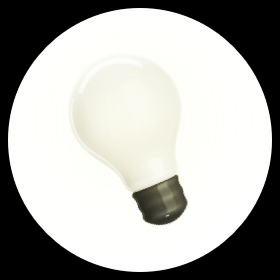You decided to start a project with us—that's great! Now comes the design discovery meeting.
*cue ominous music*
Don’t worry; the design discovery meeting is nothing to fear. A design discovery meeting is a discussion between the client and designer to talk about your business. It is a conversation to get to know your business and the project. Answering a few questions upfront, such as defining the problem and establishing goals, help measure the success of the project.
At times, it may seem like designers ask some bizarre questions. Will we be utilizing the Pantone or CMYK color system for print? In what formats would you like the logo file? Before you sit down with a designer for your next project, be prepared for the types of questions below. Here are eight common questions that might arise during a design discussion and why we ask them.

The first part of any design discovery meeting begins by asking the overarching questions about your company.
1. What products and services does your company provide?
Don't be mistaken; the designer, project manager, account manager, and other team members have spent time researching your company in-depth. We already know the answer to this question; however, we want to hear—directly from you—what it is that your company does. You know your business better than anyone, and we want to align what you know about your business with our findings and impressions.
2. Who is your target audience?
The response to this question determines multiple future decisions for the designer. Colors, photography, layout, placement, styling, and other aspects of the overall design hinge on the target audience, or in other words, your primarily-desired customer. We suggest pinpointing characteristics, such as age, location, gender, and other qualities, to get to know your primary audience and how they will most likely interact with the final product, whether that is a website, video, branding, etc.
3. Who are your competitors?
Not only who your competitors are, but also what sets your business apart from the competition. Most of the time, clients are more than aware of other companies vying within their industry. The designer takes this information and researches the competitors to discover more about their business and go-to-market approaches. Our team recognizes where competitors fall short, which potentially gives your business the upper hand. These differentiators are often excellent selling points for your marketing items, social media, and website.

After the team confirms comprehensive information about your business, we dial in on finer details: discussing what guidelines, assets, and media your company currently possess.
4. Do you have any existing brand guidelines?
Your branding should dictate your marketing items. In other words, before considering the many avenues of marketing, you should first know your brand. Logo, iconography, colors, identity, and official typefaces are just a few aspects that can establish your brand. A designer will ask about your current branding. The designer isn't being ignorant of what your logo and branding look like, but rather this question is meant to bring clarification on your most up-to-date brand guidelines. Brands change over time. We need to be sure we are using current standards.
5. Do you have any assets to be utilizing?
The designer will ask for any photography or videos we can use on the project. Clients are sometimes concerned about this question. We often hear responses such as "Well, I'm no photographer." or "We have photos, but we would have to find them." Perfect! Take any photos you can and find the ones you do have. The designer will take anything, whether one photograph from a 2003 newspaper clipping or one thousand iPhone videos on a hard drive. Even if we do not use all the assets in the project, the photos will still aid in painting a better picture of your business for us to understand.
If push comes to shove, stock photography is always an option. Need to learn more about stock photography? Read our other blog post on specific tips!
6. What areas work well and what are the top frustrations of your current website?
Knowing where you are coming from can project where you are going. For example, in a website design project, we want to hear your thoughts and opinions about your current website. How long have you had the website? Do you appreciate the layout of the site? What content needs to migrate to the new website, and what content needs to be removed? The purpose of this question is twofold. First, we want to take what you like and reimagine similar aspects for the new website. Second, we need to ensure we do not reproduce elements you do not like. This concept also applies to other marketing projects like display ads, social marketing, print, etc.

The final set of common designer questions relates to your goals. Your response specifically impacts how success is measured.
7. Is there a tone or feeling that we should attempt to convey?
Trust? History? Community-Focus? Our team wants to learn how you want your business valued by your audience. This question can feel very abstract. It helps to focus your mindset as if you were a customer meeting your business for the first time. What impression do you want to receive when viewing your business?
8. What action should the user perform when visiting your website?
The designer wants to know if your desired end goal or call to action aligns with what we have assumed. The end goal could be as simple as the user finding out more information about your business or more intricate such as signing up for email newsletters. Determining what the intent of the website or marketing project will be influences structure, button copy, and other characteristics of the overall project.
Final Takeaways
Overall, a design discovery meeting is nothing to fear. It is a conversation about your business. Our goal is to understand your business better to build a relationship and serve you to the fullest extent. Although a simple meeting, it cannot be overlooked as a pivotal step in any project process.
Ready to start the conversation? Reach out to our account management team.




